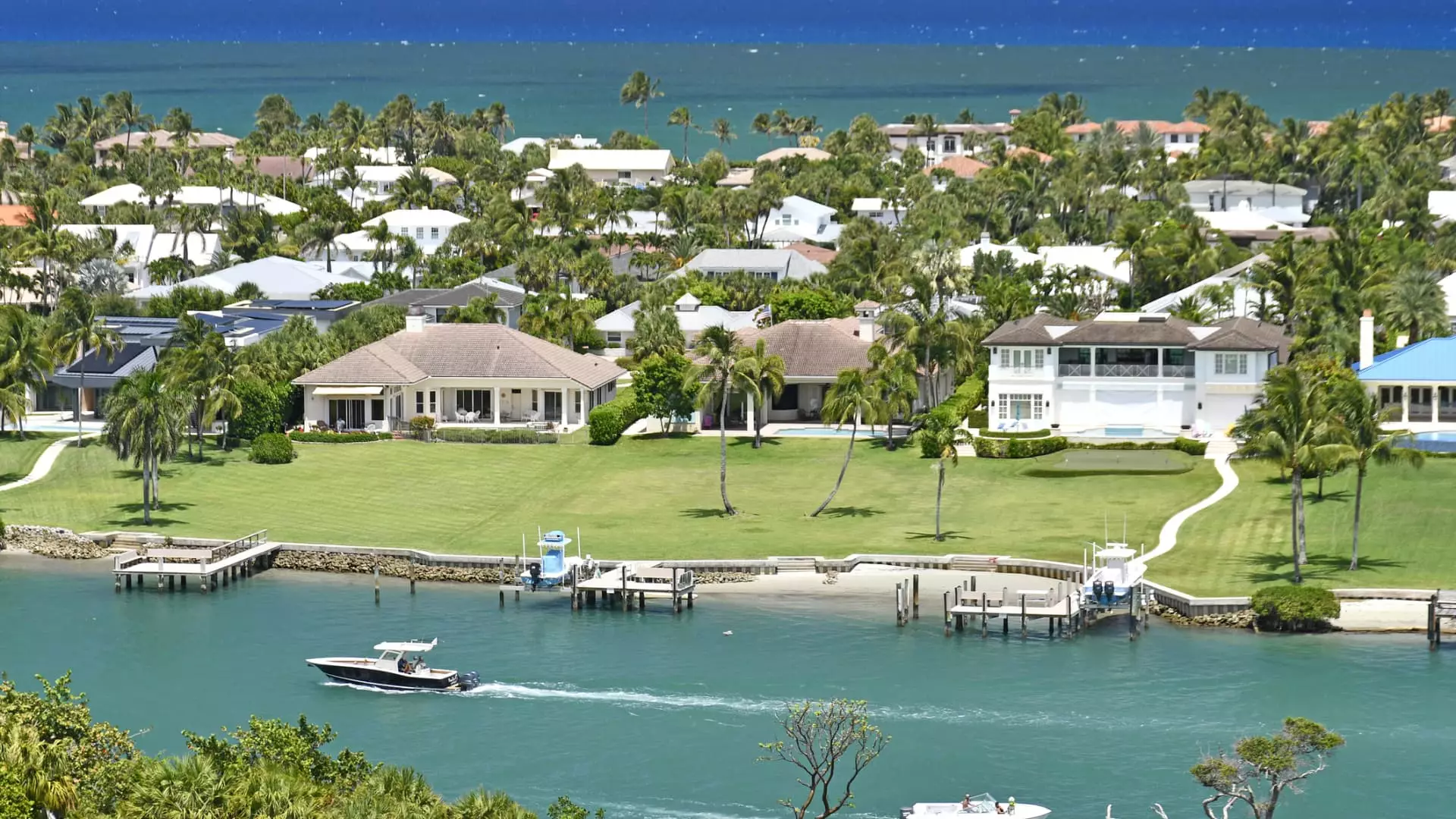The luxury real estate market, often glamorized as a playground for the affluent, is revealing a far more complicated and divided reality. Despite widespread economic uncertainty fueled by ongoing trade tensions, rising interest rates, and market volatility, the ultra-wealthy—those with a net worth north of $30 million—continue to dominate high-end property acquisitions. This isn’t just a matter of preference but a reflection of economic inertia and strategic opportunity. Meanwhile, the “merely wealthy,” those with significant but more modest means, are increasingly sidelined by financial headwinds and cautious spending behavior. The clear message is that wealth is becoming stratified in its influence, and access to luxury real estate is no longer uniformly available even within the upper echelons of society.
This fissure underscores a fundamental shift within wealth dynamics—liquidity and purchasing power now set the tone. Ultra-rich buyers, thanks to their capacity for all-cash offers, gain undeniable control and leverage in negotiations. By sidestepping loans and the burden of high interest rates, they convert their cash readiness into speed, security, and substantial bargaining power. This advantage extends beyond mere convenience: it symbolizes how liquidity fosters resilience within an unstable economy. It is a bitter pill but one that exposes the realities of economic inequality, where a cash offer isn’t just beneficial—it’s transformative.
The Increasing Caution of the Affluent
In contrast to the aggressive posture of ultra-wealthy buyers, those with less financial fluidity are retreating into conservatism. Sensitivity to interest rates—a classic determinant of mortgage affordability—has led many to pause or recalibrate their plans. Since borrowing costs remain elevated, these buyers face the stark dilemma of inflated expenses or halting purchases altogether. The consequences are profound: a restrained appetite for luxury homes, fewer aggressive bids, and more scrutiny over value.
This caution isn’t simply about risk aversion; it’s also a symptom of broader economic anxiety provoked by market uncertainty. The dips observed in May 2025 luxury home sales, shrinking by 4.7% for single-family homes and an alarming 21.1% for attached properties, are symptomatic of these pressures. It’s a sobering reminder that beneath the glamour of penthouses and sprawling estates lies an uneven market reacting not unlike the broader public—hesitant, watching, and waiting.
Luxury Real Estate as a Hedge—But for Whom?
The enduring belief in real estate as a tangible, hard asset that preserves wealth and counters inflation underpins the continued appetite for luxury properties. Real estate arguably offers a refuge from the volatility of financial markets, particularly equities, which have become increasingly unpredictable. For the ultra-wealthy, this plays into a strategic asset allocation approach—real estate’s physical permanence and prestige serving as pillars of wealth retention.
Yet, it’s critical to recognize that this safety net is not equally accessible. The survey mentioned reflects a picture where two-thirds of affluent clients maintain or even increase real estate exposure, but a significant minority have diverted interest elsewhere or delayed investments. Such fragmentation signals emerging cracks: while luxury real estate remains an elite haven, it is less forgiving than it once was and demands greater discernment from buyers. The rise in client demands for state-of-the-art features—smart appliances, spa-like amenities, seamless indoor-outdoor living—illustrates a market that has evolved beyond mere status symbols into one where experiential quality and innovation are mandatory.
The Evolution of Buyer Expectations and Market Realities
No longer can luxury properties rely solely on grandeur or location to command premium prices. Buyers, especially those new to the luxury segment, exhibit distinct selectiveness, simultaneously pushing builders and sellers to elevate their offerings. The emphasis on technological integration and lifestyle-enhancing features reflects a broader cultural shift. Luxury is no longer just about exclusivity but about convenience, connectivity, and wellness.
This evolution underscores a growing maturity and sophistication among luxury consumers. It also suggests that the luxury property market will increasingly bifurcate between those who can afford to embrace innovation and the increasingly cautious majority who must reconcile aspirations with reality. Sellers responding by reducing listing prices further confirm a market in transition—not collapsing, but recalibrating. Such recalibration demands strategic thinking: understanding that the luxury real estate sector is no longer a monolith of relentless growth but a sensitive barometer of broader economic shifts.
Reflecting on Inequality Within Affluence
Ultimately, the luxury real estate market is a stark lens through which to view socioeconomic stratification in America and globally. The ultra-wealthy continue to consolidate opportunities and expand asset ownership, leveraging liquidity to their advantage in moments of uncertainty. Meanwhile, wealthier but less affluent buyers find themselves compelled to act cautiously or stall purchases altogether amid rising costs and market jitters.
This divergence is indicative of a larger issue affecting capital markets and asset access across sectors. While economic uncertainty impacts all, the very wealthy exploit it as an arena for wealth preservation and growth, reinforcing systemic disparities. The luxury real estate market, often seen as a symbol of prosperity, paradoxically reveals a marketplace of winners and sidelined participants—proving that not all wealth is equal when tested by economic volatility.

